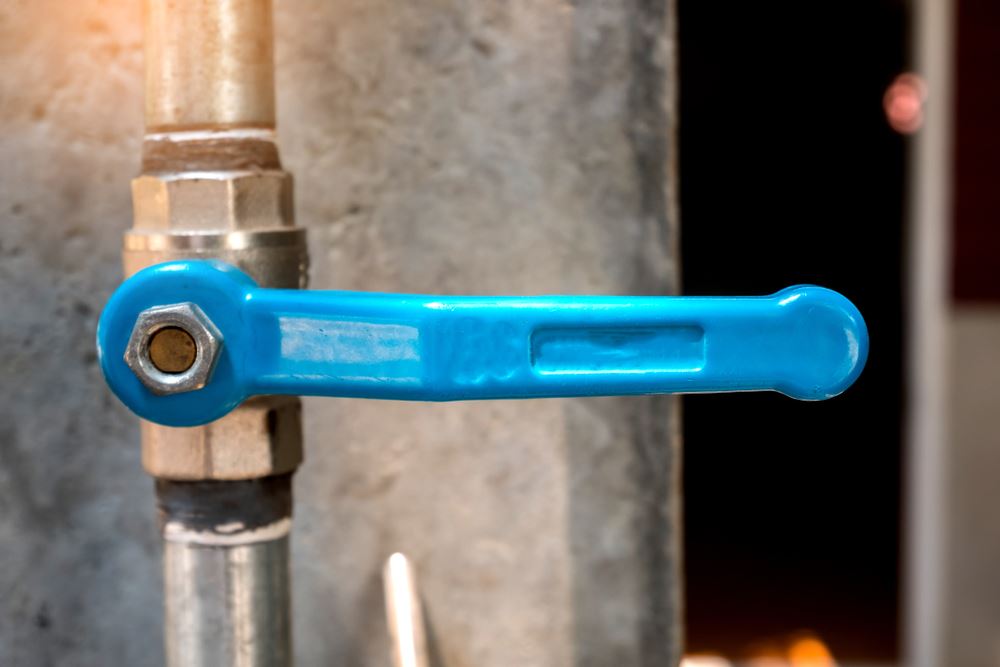Preventing costly plumbing disasters is relatively simple and can be answered in one simple question:
Do you know where your main water shut-off valve is?
IF you do, you get a gold star and a pat on the back, because you’ve just taken the first step toward preventing a costly, messy, plumbing emergency.
Imagine this:
You hear a voice screaming:
“Help! Water’s gushing out of the bathroom wall!”
Or you walk in the door after a long day at work and your shoes are immediately covered with water, splashing like you’re walking in high tide, water rising past your ankles as you watch in horror.
Or you’re in the middle of doing laundry when the hose to your machine breaks loose and begins spraying water all over, dousing everything around you like a demented elephant drowning an enemy.
Believe me. It can happen.
What do you do?
Where is your main water shut-off valve?
In case of any kind of emergency, the best response is to immediately shut off the water coming into your home.
To do that, you need to know where your main shut-off valve is.
Your house valve, water main shut-off valve, or isolation valve (it has many names) can be located in several places. If you have a water treatment system, there usually can be one found on one or both sides of the system. Typically, it will be on the vertical pipe below the water treatment system.
If you know where your water meter is located in your yard, the valve is typically on the same side of the home as the water meter, typically within 8 – 12” above the ground.
Sometimes they can be located above the water heater. If this is the case, on the cold (right) side of the water heater, there would be two valves. One valve will typically be larger and located closer to the wall, and the other would be closer to your water heater. The valve in this case would the one closest to the wall.
You may not even have an above-ground valve at all. Some older homes have their valves buried in the ground. If this is the case, try to find the closest hose bibb to your water meter, and it will most likely be an old gate valve in the ground. If this is your situation, we would highly recommend you replace it and either raise it above ground or put it in a new larger valve box that can be easily located.
It is not big, flashy, or noticeable, so if you don’t already know where it is, you might spend precious minutes searching for it. Since there is not one standard place for builders and contractors to locate shut-off valves, it could be anywhere, and you need to know where it is located BEFORE the emergency. Trying to find it when water is flooding your house and you’re worrying about how you’ll survive in an aquarium is not conducive to good mental health.
In many cases, the main water shut-off valve will be located near your water heater. It may be in a crawl space or garage. In Florida, because we don’t get much freezing weather, the main shut-off may be outside the home, often located near an outside faucet. Most frequently, it will be on the front side of the house nearest the road because that is where the main water pipe runs.
What a Shut-Off Valve Looks Like
Don’t look for anything big or conspicuous.
Your main water shut-off is a simple valve, either a “gage Valve” or a “ball” valve.
Gate Valve:
A gate valve looks like a round, metal wheel that looks much like the knob on an outdoor faucet. By turning the wheel clockwise a few turns, you actually lower an internal gate that keeps the water from flowing into the line.
If you have a gate valve, remember the saying, "Righty-Tighty, Lefty-Loosey" to help you know which way to turn. Gate valves will often be installed on the vertical above ground, with the handle either facing out or to the left or right. Be careful not to force the gate valve unless absolutely necessary as this could cause a broken stem and a dropped gate, which would leave you either unable to restore water to your home or to shut it off.
Ball Valve:
A ball valve looks more like a miniature butter knife or a metal popsicle stick. It’s a lever instead of a wheel. If the lever is going in the same direction as the pipe, water is flowing. To shut the water off, you simply have to turn the lever perpendicular to the water line.
Traditionally ball valves are installed with the handle facing the direction of flow, but this is not always the case. When the handle is parallel with the pipe the water is on. When it is perpendicular to the pipe the water is off. Righty-tighty, lefty-loosey does not always apply to a ball valve. When the handle is parallel to the pipe and facing down, the handle will turn 90 degrees to the left to be in the off position. When the handle is parallel to the pipe and facing up, the handle will turn 90 degrees to the right to be in the off position
Four Causes of Broken Pipes:
When water shoots into your home, it’s often because of a broken pipe.
One of the main causes of broken pipes that pour water into homes is freezing temperatures. You may think that because Florida doesn’t have cold weather, pipes would never burst, but that is not the case.
Pipes can burst for multiple reasons.
1) First, pipes can corrode. Corrosion happens when the mineral content of your water is out of whack. If the pH factor is not where it should be, a chemical reaction happens, causing your pipes to corrode. Corrosion makes them weaker, and more likely to crack or burst.
2) Second, tree roots push against pipes. Tree roots may grow slowly, but they are big and exert a lot of pressure on objects they encounter. Tree roots can easily push water pipes out of line or crush them.
3) Third, pipes get old. Like people, their joints age, causing cracks and breaks under the duress of extreme temperatures and high water pressure.
4) Fourth, over-pressure. Most plumbing appliances and fixtures are rated at a certain pressure. Usually, that pressure is below 80PSI. Florida plumbing code requires a pressure-reducing valve on homes where water pressure exceeds 80PSI. One good way to determine water pressure in your home is to install a gauge on a hose bibb that has a marker needle built-in. Leave this gauge on your hose bibb for 24 hours. The marker needle will record your highest recorded pressure.
Pressure in the water system is the highest late at night and early in the morning when the least amount of water in the neighborhood is being used. If your system records anything over 80PSI, a pressure-reducing valve and pressure-relief valve is highly recommended.
What Are Your Pipes Made of?
Your pipes may be made of copper, CPVC, PEX, polybutylene, galvanized, and in some rare cases, lead.
Polybutylene is a grey flexible pipe, a precursor to PEX. Polybutylene had a massive failure rate in both pipe and fittings and is now outlawed for use in the entire country. Prior to 2010, PEX also had a recall, and some homeowner's insurance companies will not insure homes with PEX prior to 2010. Homeowner's insurance will almost never insure a house with pipes made of polybutylene.
CPVC gets extremely brittle to any movement or motion. Water with high chlorine content is harmful to almost all pressurized water lines and fixtures. New CPVC that is a creamy color and not too old has a little flexibility. CPVC pipe that is a dark yellow or brown color is extremely brittle and should never be touched unless it’s by a trained, licensed, and insured professional
Pipes, Prevention, and Precaution
No matter how old your home is or what kind of pipes you have, plumbing emergencies happen. (They’re emergencies, after all, because they’re unexpected and unpredictable!)
Your best prevention of plumbing disasters is knowing where to turn off your main water valve in case of emergency.
Tell everyone in your family exactly where the main shut-off water valve is. You can even label it with a hanging tag or a piece of tape. When a water emergency looms, you can be a superhero by shutting it down immediately.
ServiceOne Can Help
ServiceOne has licensed plumbers to help you with any issues: drain-cleaning, continually running toilets, leaky faucets, clogged pipes. We’re also experts in water filtration, air purification, and anything heating and air-conditioning related.
Call us. We’re happy to help!


